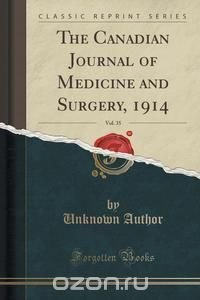Excerpt from The Canadian Journal of Medicine and Surgery, 1914, Vol. 35
As soon as a case of lead colic is placed under his care, one or two hypodermic injections of morphine is administered, in order to relieve pain and calm excitement. On the second day of treatment, atropine sulphate is given hypodermically, at first twice a day, in doses of half a milligramme (gr. 1/128), morning and evening; afterwards in similar doses three times a day. In some of the cases fomentations are applied to the abdomen, in others ice poultices are used. The patient is allowed to drink water in tablespoonfuls, half a litre (17? oz.) being given for daily consumption.
Owing to the morphine, given on the first day of treatment, and the atropine sulphate injected on the second day, the cramping pains of lead colic are relieved. The vomiting ceases to trouble the patient on the third or fifth day in severe cases; in milder ones, this symptom is relieved immediately, and small quantities of milk and water are allowed. After the cramps and vomiting have been relieved, half a gramme of powdered scammony (gr. 7?) is given as a laxative. Usually, two stools are obtained and, after the bowels move, the attack of lead colic may be looked on as ended.
About the Publisher
Forgotten Books publishes hundreds of thousands of rare and classic books. Find more at www.forgottenbooks.com
This book is a reproduction of an important historical work. Forgotten Books uses state-of-the-art technology to digitally reconstruct the work, preserving the original format whilst repairing imperfections present in the aged copy. In rare cases, an imperfection in the original, such as a blemish or missing page, may be replicated in our edition. We do, however, repair the vast majority of imperfections successfully; any imperfections that remain are intentionally left to preserve the state of such historical works. Это и многое другое вы найдете в книге The Canadian Journal of Medicine and Surgery, 1914, Vol. 35 (Classic Reprint)















